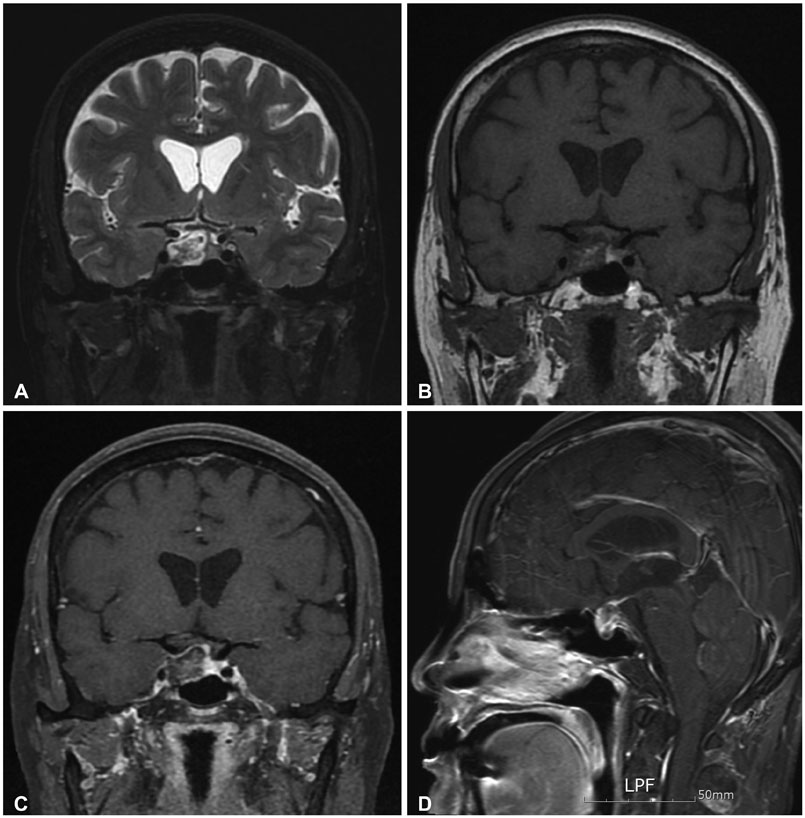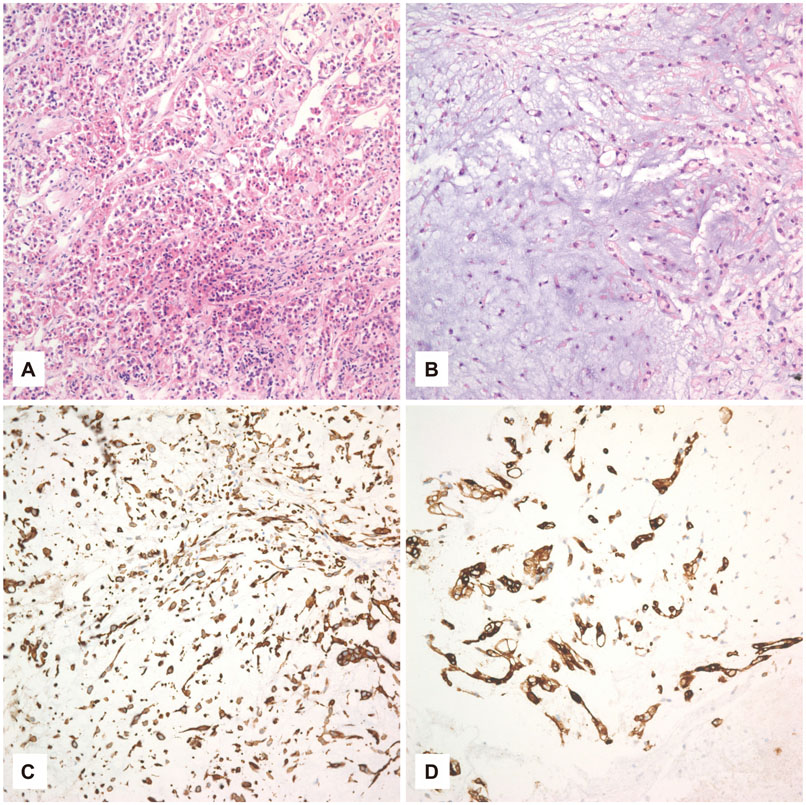Brain Tumor Res Treat.
2017 Apr;5(1):49-52. 10.14791/btrt.2017.5.1.49.
A Case of Coincidental Intrasellar Chordoma and Pituitary Adenoma
- Affiliations
-
- 1Department of Neurosurgery, College of Medicine, Chung-Ang University, Seoul, Korea. kiss798@gmail.com
- 2Department of Pathology, College of Medicine, Chung-Ang University, Seoul, Korea.
- 3Department of Neurosurgery, School of Medicine, Kyungpook National University, Daegu, Korea.
- KMID: 2378307
- DOI: http://doi.org/10.14791/btrt.2017.5.1.49
Abstract
- Although chordomas are midline tumors, primarily intrasellar chordomas are extremely rare. In this report, the authors describe the case of a 68-year-old female with partial abducens nerve palsy in the right eye due to the intrasellar cystic tumor. After endonasal trans-sphenoidal surgery, intraoperative and histopathological findings confirmed the co-occurrence of an entirely intrasellar chordoma and pituitary adenoma. To our knowledge, the present case is the third reported case of an intrasellar chordoma with a pituitary adenoma.
Keyword
MeSH Terms
Figure
Reference
-
1. Thodou E, Kontogeorgos G, Scheithauer BW, et al. Intrasellar chordomas mimicking pituitary adenoma. J Neurosurg. 2000; 92:976–982.
Article2. Walcott BP, Nahed BV, Mohyeldin A, Coumans JV, Kahle KT, Ferreira MJ. Chordoma: current concepts, management, and future directions. Lancet Oncol. 2012; 13:e69–e76.
Article3. Hirosawa RM, Santos AB, França MM, et al. Intrasellar chondroid chordoma: a case report. ISRN Endocrinol. 2011; 2011:259392.
Article4. Wu AW, Bhuta S, Salamon N, Martin N, Wang MB. Chondroid chordoma of the sella turcica mimicking a pituitary adenoma. Ear Nose Throat J. 2015; 94:E47–E49.5. Kagawa T, Takamura M, Moritake K, Tsutsumi A, Yamasaki T. A case of sellar chordoma mimicking a non-functioning pituitary adenoma with survival of more than 10 years. Noshuyo Byori. 1993; 10:103–106.6. Mathews W, Wilson CB. Ectopic intrasellar chordoma. Case report. J Neurosurg. 1974; 40:260–263.7. Hattori Y, Tahara S, Ishii Y, et al. A case of prolactinoma with chordoma. Clin Neurol Neurosurg. 2013; 115:2537–2539.
Article8. Gökalp HZ, Naderi S. A case of intracranial chordoma associated with pituitary adenoma. J Neurosurg Sci. 1991; 35:103–105.9. Tan WS, Spigos D, Khine N. Chordoma of the sellar region. J Comput Assist Tomogr. 1982; 6:154–158.
Article





